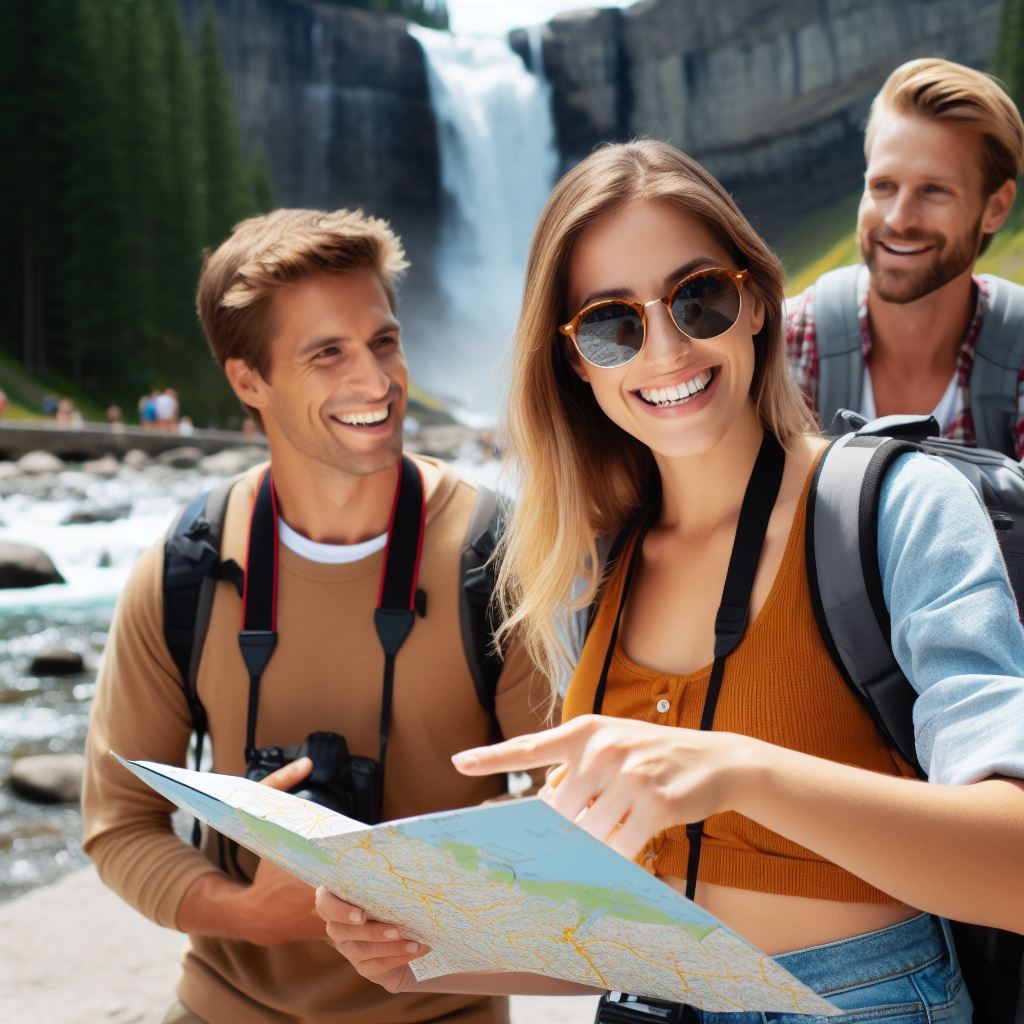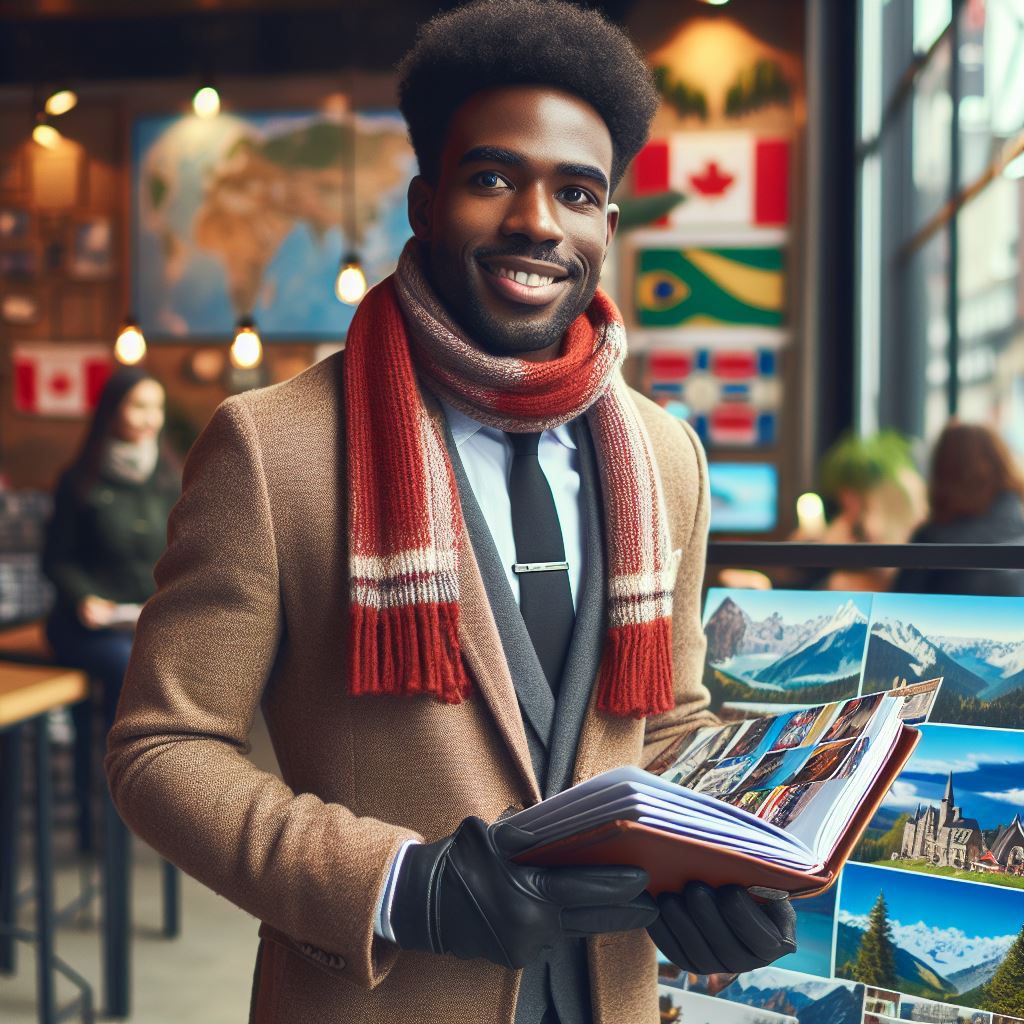Introduction
Background on the Popularity of Historical Tours
In recent years, historical tours have surged in popularity, captivating wanderers and history enthusiasts alike.
The allure lies in their unique ability to transport participants across time, immersing them in the rich tapestry of bygone eras.
From ancient civilizations to pivotal moments in modern history, these tours offer a tangible connection to the past.
Purpose of the Blog Post
Our journey through this blog is to dissect the essence of historical tours and unravel the secrets behind their widespread appeal.
We aim to delve into the art of crafting compelling narratives that breathe life into historical sites, creating an immersive experience for every visitor.
Join us as we explore the purpose of historical tours, shedding light on how these excursions not only educate but also ignite a passion for history.
Through the lens of engaging storytelling, we’ll uncover the potent magic that transforms a mere tour into a captivating voyage through time.
Get ready to embark on a literary exploration, where the past comes alive, and the echoes of history reverberate in every carefully crafted tale.
The Importance of Crafting Engaging Stories
Crafting engaging stories is essential for historical tours as it helps captivate visitors’ attention, making the experience more memorable and impactful.
Captivating visitors’ attention
To successfully engage visitors, historical tours should incorporate interesting anecdotes and lesser-known facts.
These elements stimulate curiosity and make participants eager to learn more.
By sharing intriguing stories, guides can create a sense of excitement and anticipation within the audience.
Furthermore, crafting stories that evoke emotional connections ensures a stronger bond between the visitors and the historical content.
Emotional experiences are more likely to be remembered, making the tour more impactful.
When participants feel connected to the stories, they leave with a deeper understanding and appreciation for the history being presented.
Making historical information relatable and understandable
Many people struggle to relate to the past as they perceive it as distant and irrelevant to their lives.
To overcome this challenge, historical tours should use modern-day references.
By drawing parallels between historical events and current circumstances, guides help participants understand the significance of the past in today’s world.
This approach brings history to life and makes it relatable, fostering a greater appreciation for its importance.
In addition, explaining the relevance of the past in today’s society can foster a deeper understanding of the world we live in.
By highlighting how historical events have shaped the present, guides provide context and demonstrate the ongoing impact of past actions.
This connection between past and present promotes critical thinking and encourages visitors to consider the implications of historical events in their own lives.
Enhancing the overall visitor experience
Crafting engaging stories is instrumental in creating an enjoyable and fulfilling tour experience.
Holding visitors’ attention throughout the tour is crucial to ensure they remain engaged and interested.
By continuously weaving captivating narratives, guides can maintain the audience’s focus, preventing distractions or boredom.
Moreover, by leaving a lasting impact on participants, historical tours can transform into transformative experiences.
Engaging stories that resonate with visitors on an emotional level have the power to inspire and provoke thought long after the tour is over.
This lasting impact can motivate individuals to continue exploring history and seeking out new educational experiences.
In short, crafting engaging stories is of paramount importance in historical tours.
By captivating visitors’ attention through interesting anecdotes and emotional connections, guides can make the experience more memorable and enjoyable.
Relating historical information to modern-day references helps visitors understand and appreciate the relevance of the past.
Ultimately, by enhancing the overall visitor experience and leaving a lasting impact, historical tours become transformative journeys into our shared history.
Read: Famous Canadian Travel Agents: Success Stories
Researching and Gathering Historical Information
Conducting thorough research
Research is a crucial step in crafting engaging stories for historical tours.
It involves thoroughly exploring various sources, such as books, interviews, and archives, to gather comprehensive information.
By utilizing multiple sources, we ensure a well-rounded understanding of the topic, enhancing the quality of the tour experience.
During the research process, it is essential to verify facts and cross-reference information.
This approach ensures the accuracy and reliability of the historical data that will be shared with the tour participants.
By double-checking the information from different sources, we can confidently present an authentic account of the events and avoid any potential inaccuracies.
Identifying key stories and narratives
Identifying key stories and narratives plays a vital role in captivating the audience.
It is crucial to choose compelling stories that resonate with the participants, igniting their interest and making the tour memorable.
By selecting stories that evoke emotions and curiosity, we can create a connection between the audience and the historical events being presented.
Furthermore, highlighting local history and important events specific to the location adds uniqueness and relevance to the tour.
It allows participants to develop a deeper appreciation for the area’s significance and fosters a sense of pride in the community.
By showcasing the local history, we aim to create a stronger bond between the audience and their surroundings.
Adding depth and context to the narratives
To bring depth and context to the narratives, it is crucial to uncover different perspectives and viewpoints.
History is often subjective, influenced by various factors and personal interpretations.
By presenting multiple perspectives, we encourage critical thinking and a more comprehensive understanding of the events.
This approach helps participants gain a more nuanced picture of the historical context.
Additionally, connecting broader historical trends to specific local events helps participants understand the broader significance of the location.
By highlighting how local events fit into the larger historical landscape, we give participants a sense of the impact and relevance of their surroundings.
This contextualization enhances the overall experience by providing a broader understanding of the historical narratives being explored.
In essence, thorough research is the foundation of crafting engaging stories for historical tours.
Exploring multiple sources, verifying facts, and identifying key stories are crucial steps in creating an immersive and informative experience.
Furthermore, adding depth and context to the narratives by uncovering different perspectives and connecting local events to broader historical trends enhances the participants’ understanding and appreciation.
By investing time and effort into research, we ensure that historical tours leave a lasting impression on the audience.
Read: Event Planners: Key Skills for Success in Canada

Discover More: The Future of Canadian Gastronomy and Chefs
Crafting Engaging Narratives
Structuring the tour’s storyline
When crafting historical tours, storytelling is crucial in capturing visitors’ attention and creating an engaging experience.
A well-structured storyline forms the backbone of a successful tour, ensuring visitors are captivated from start to finish.
To create a logical flow of information, it is important to carefully organize the tour’s narrative.
Begin by introducing the historical background and context, setting the stage for the stories to come.
From there, seamlessly transition between chronological and thematic approaches.
This mix keeps the tour dynamic, offering a variety of perspectives and insights.
Using storytelling techniques to engage visitors
Storytelling techniques play a significant role in hooking visitors and sustaining their interest throughout the tour.
Building suspense and anticipation is one such technique.
By introducing intriguing aspects of historical events or personalities, visitors are compelled to continue the journey, eager to discover more.
Additionally, the use of descriptive language helps create vivid visuals in visitors’ minds.
Choosing words carefully to paint a detailed picture enhances their immersive experience, making the stories come alive.
Incorporating interactive elements
Incorporating interactive elements further enhances visitor engagement.
By encouraging participation through thought-provoking questions and open discussions, visitors feel a sense of involvement and connection to the narrative.
This interaction allows them to reflect on the stories and share their own thoughts and perspectives.
Unlock Your Career Potential
Visualize a clear path to success with our tailored Career Consulting service. Personalized insights in just 1-3 days.
Get StartedMultimedia materials are also effective tools in crafting engaging narratives.
Integrating images or short videos related to the historical events being discussed adds another layer of visual stimulation.
It helps break the monotony of a solely verbal tour and provides visitors with a more holistic understanding of the stories being shared.
By combining all these elements, historical tours can provide visitors with a truly immersive and captivating experience.
Crafting engaging narratives involves carefully structuring the tour’s storyline, utilizing storytelling techniques, and incorporating interactive elements.
Remember, a well-crafted narrative transports visitors to another time and place, leaving them with a deep appreciation for history.
So, whether you’re a tour guide, a historian, or simply someone interested in sharing stories, make it a priority to create a memorable experience for your audience.
Read: Top Event Planning Trends in Canada for 2024
Delivering a Memorable Experience
Delivering a memorable experience is crucial when conducting historical tours.
The success of such tours depends not only on the accuracy of information presented but also on the engagement of participants throughout the experience.
Engaging delivery style
One key aspect of creating an engaging historical tour is to utilize captivating presentation techniques.
Instead of presenting a dry recitation of facts, the tour guide can employ storytelling approaches that bring the history to life.
By incorporating narrative elements and dramatic flair, the participants will be more likely to connect emotionally with the historical events being shared.
Additionally, incorporating humor and personal anecdotes into the tour can further enhance engagement.
Sharing funny or interesting stories related to the historical events being discussed can create a lively and entertaining atmosphere.
This approach not only captures participants’ attention but also helps them remember the information presented.
Navigating the physical space effectively
To ensure a memorable experience, it is essential to consider the physical space and logistics of the tour.
Clear visibility and audibility are crucial to participants’ understanding and enjoyment of the tour.
Tour guides should use appropriate amplification systems or microphones to ensure that all participants can hear the information being shared.
Additionally, tour guides should position themselves in a way that allows everyone in the group to see any relevant visual aids or props.
Managing group size is another important factor in facilitating interaction and engagement.
Large groups might be overwhelming and lead to participants feeling disengaged.
By keeping the group size manageable, tour guides can foster a more intimate and interactive experience.
Participants will have ample opportunities to ask questions, share their thoughts, and actively participate in the tour.
Incorporating visuals and props
Visuals and props play a vital role in enhancing the storytelling experience during a historical tour.
Displaying relevant artifacts or replicas can provide participants with a tangible connection to the past.
Physical objects help participants visualize and better understand historical events, making the experience more immersive.
In addition to artifacts, using maps, diagrams, or illustrations can further support storytelling.
Visual aids help participants grasp the context of historical events by providing a visual representation of the places, routes, or layouts being discussed.
Maps, in particular, can be used to trace journeys, battles, or other significant aspects of history, enabling participants to comprehend the spatial relationships between different locations.
By delivering engaging content, navigating the physical space effectively, and incorporating visuals and props, a historical tour can provide a memorable and enriching experience for participants.
Engaged and informed participants are more likely to connect with the history being shared, fostering a deeper appreciation and understanding of the past.
Read: Canadian Event Planners: Working with Vendors
Conclusion
Summary of the importance of crafting engaging stories in historical tours
Crafting engaging stories in historical tours is crucial in capturing the attention and interest of visitors.
It brings history to life, making it relatable and memorable.
Encouragement to explore historical tours and appreciate their impact
We encourage everyone to explore historical tours and uncover the rich stories that exist in our past.
By engaging in these tours, we can truly appreciate the impact history has on our present and future.
Final thoughts on the benefits of engaging storytelling in preserving and sharing history
Engaging storytelling serves as a powerful tool in preserving and sharing history.
It allows us to connect with our roots, learn from the past, and pass on important lessons to future generations.




